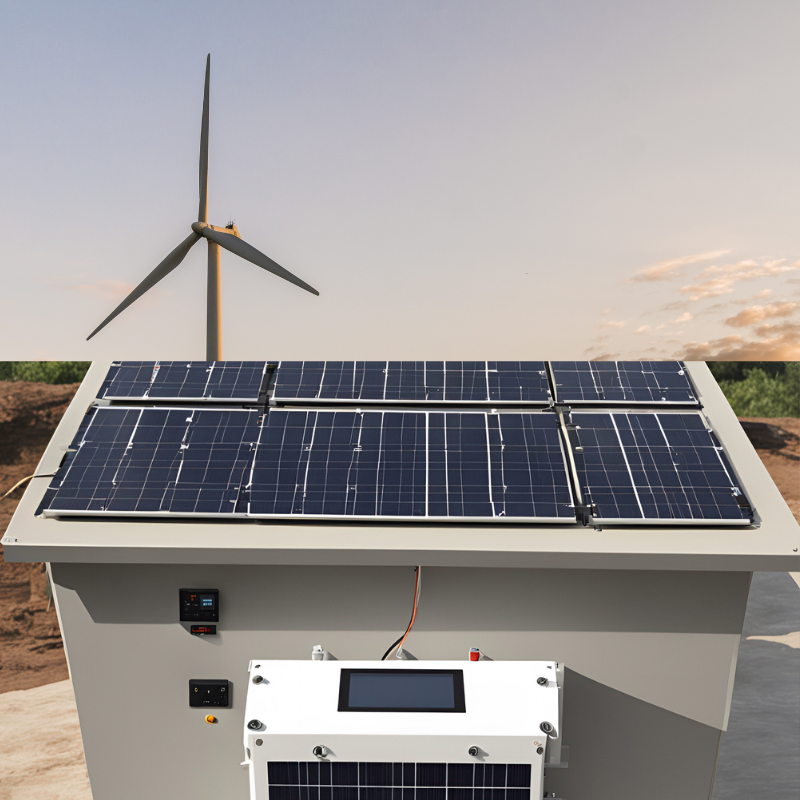
Energy storage technologies have made significant advancements in recent years, and their importance has become increasingly apparent. As global demand for renewable energy increases and the need for flexibility in power systems grows, energy storage is becoming a key component of modern energy infrastructure. Below are some of the primary benefits of energy storage and why it is more crucial now than ever before.
1. Enhancing Grid Stability
- Balancing Supply and Demand: Energy storage systems can store electricity during times of surplus and release it during peak demand periods, helping to balance supply and demand.
- Frequency Regulation: By quickly responding to changes in grid frequency, energy storage systems can improve the stability and reliability of the grid.
2. Promoting Renewable Energy Integration
- Addressing Intermittency: Solar and wind energy, which are intermittent by nature, can be stored during periods of availability and used when there is no sunlight or wind, ensuring continuous power supply.
- Increasing Utilization: Energy storage systems maximize the use of renewable energy, reducing waste and improving overall energy efficiency.
3. Reducing Energy Costs
- Peak Shaving and Load Leveling: By storing electricity when prices are low and using it when prices are high, users can save on electricity costs.
- Delaying Infrastructure Investment: Energy storage can help delay or avoid expensive grid upgrades and expansion projects.
4. Improving Energy Security
- Emergency Power Supply: Energy storage systems can provide backup power during grid failures or natural disasters, ensuring the continuous operation of critical facilities.
- Reducing External Dependence: Localized energy storage can reduce reliance on imported fossil fuels, enhancing national or regional energy independence.
5. Driving Technological Innovation and Economic Development
- Technological Innovation: Advances in energy storage are not limited to batteries but include various forms such as thermal energy storage and mechanical storage, driving innovation across the industry.
- Economic Growth: The development of the energy storage sector creates new job opportunities and stimulates growth in related industries.
Do you also want to have a solar energy system?Let’s take the 90W solar system as an example.
Configuration of a 90W Solar Power System
1. Selection of Battery Bank Capacity
Assume that the average power consumption of the electrical devices is 90W, and the entire system uses a 12V DC battery system to invert to 220V AC power supply. The daily energy consumption of the system would be: 90 watts12 volts×24 hours=180 Ah12 volts90 watts×24 hours=180 Ah
Assuming the battery bank capacity should support continuous operation for three days during rainy weather, the minimum battery bank capacity required would be: 180 Ah×3 days=540 Ah180 Ah×3 days=540 Ah
Although the nominal capacity of the battery is its rated discharge capacity, the best choice for batteries in solar systems is deep-cycle, maintenance-free lead-acid batteries. Generally, discharging between 50% to 80% provides the best system reliability. We design based on a 50% depth of discharge to ensure some margin. Therefore, the total capacity designed for this system is: 540 Ah0.5=1080 Ah0.5540 Ah=1080 Ah
Thus, the total capacity of the battery bank needs to be 1200Ah to meet the requirement of continuous 24-hour operation with three consecutive days of rainy weather. The optimal configuration for the battery bank (DC 12V) would be: six 2V 1200Ah batteries connected in series.
2. Selection of Solar Panels
A solar panel array consists of one or more solar modules. If there are multiple panels, their voltages should be consistent to minimize losses from serial and parallel connections.
Based on the solar radiation parameters of the installation site and the characteristics of the load, determine the total power of the solar panel array. Based on the voltage and current requirements of the designed system, determine the number of solar panel components needed in series and parallel configurations.
Assuming the effective daily sunlight hours at the installation site are 6 hours, and considering the efficiency losses during charging and inversion processes, calculate the output power required from the solar panels.
For a system operating continuously for 24 hours with an average power of 90W, the daily rated energy consumption is: 90 W×24 hours=2160 Wh90 W×24 hours=2160 Wh
Considering the losses due to power devices in charge control and inversion, assume an inverter efficiency of 0.9. The total energy required from the solar panels should be: 2160 Wh0.9=1944 Wh0.92160 Wh=1944 Wh
In actual charging conditions, solar panels may have an efficiency factor of around 0.7 due to weather conditions. Calculating the total power needed for solar panels with 6 effective sunlight hours per day: 1944 Wh6 hours/0.7=462.86 W6 hours1944 Wh/0.7=462.86 W
Therefore, the solar panels should be designed for 500W, using five 12V 100W panels connected in parallel.
3. Design of Solar Panel Mounting Structure
The mounting structure supports the solar panel array and must ensure a secure connection between the components and the structure, allowing for easy replacement of solar panels. The solar panel array and its mount must withstand wind speeds up to 120 km/h without damage.
The mounting angle can be adjustable or fixed to maximize electricity generation during the month with the lowest average daily radiation.
All fasteners must have sufficient strength to securely attach the solar panels to the mounting structure. Solar panels can be installed on rooftops, but the mounting structure must be connected to the main building structure, not just the roof material.
For ground-mounted solar arrays, the minimum clearance between the solar panels and the ground should be 0.3 meters. The base of the columns must be securely attached to the foundation to support the weight of the solar array and withstand the design wind speed.
4. Selection of Solar Charge Controller
The charge controller can be a standalone device or integrated with the inverter.
The charge controller should have the following protective functions: a) Circuit protection against short circuits in the load. b) Circuit protection against reverse polarity in the load, solar panels, or batteries. c) Circuit protection against internal short circuits in the charge controller, inverter, and other equipment. d) Protection against lightning strikes in high-lightning areas. e) Protection against reverse discharge from the battery through the solar panels.
For solar systems with peak power greater than 20W, the controller should have High Voltage Disconnect (HVD) and Low Voltage Disconnect (LVD) functions.
In this wireless dispatch system, the selected peak power of the solar panels is 500W, and the charging voltage is 12V. Using this data, the maximum operating current of the solar charge controller can be calculated as: 500 W12 V≈41.67 A12 V500 W≈41.67 A

